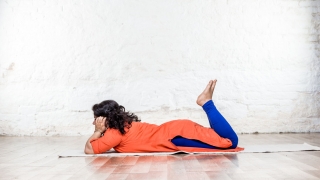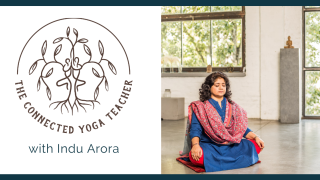
Savasana—Ahhh... or Argh!?
Debunking the Top 3 Myths of Shavasana

![]() 2 minutes
2 minutes
What is alignment in an asana and how to achieve it?
1) When we allow our mind to take a seat (settled and relaxed) in the body then we have established an Asana
2) When we calibrate the pace of breath with the clam mind then we have established alignment
3) When we are in the state of asana instead of performing it, then we have actually taken a seat
4) When there is clarity that the purpose of asana is to gather the scattered energy in the heart center as Prana then it is alignment
5) When we become a witness and not interfere/overwrite the pace of breath but simply allow the asana itself to cleanse, gather and hold prana by changing the breath pace you have allowed the innate alignment to take place
6) Asana is not always about feeling good, light, happy but holding a pleasant space in the mind (Su-kha) irrespective of the physical sensations
7) It cannot be one common experience for everyone in the same asana. We all are at a different place in our life physically, mentally, emotionally, energetically and spiritually: honor that difference and know that irrespective of the time it takes, we all reach the same goal.
The final experience of Yoga is the same for everyone and we are all on the path. Knowing this, is alignment.
Start your FREE subscription to Indu Arora's newsletter to get more on Yoga and Ayurveda here

Debunking the Top 3 Myths of Shavasana

Chakras are a part of yoga, but a lot of us in the yoga world are not familiar with it. We may feel uncomfortable discussing chakras or may have a very limited understanding. Join me and Shannon Crow to our conversation on Chakras

"Just go and apply haldi/ turmeric!" - my mother often said when there was a cut, injury, pain or ache.
We all have heard about turmeric and its healing properties. What was known to Indian cuisine as a culinary and medicinal secret is now known to the world.